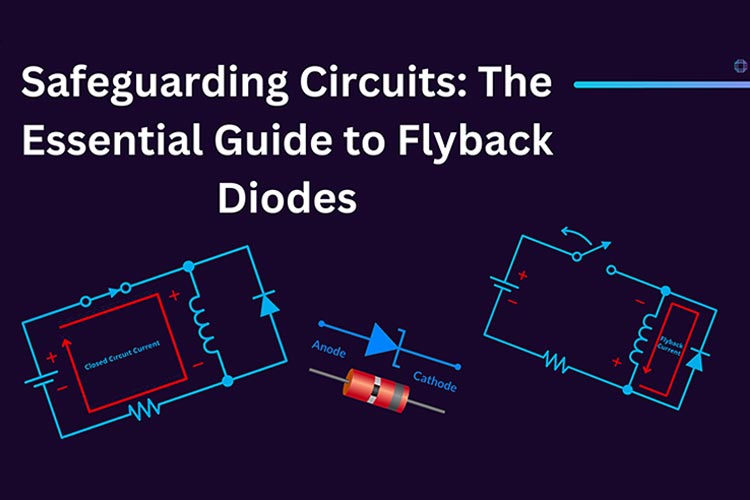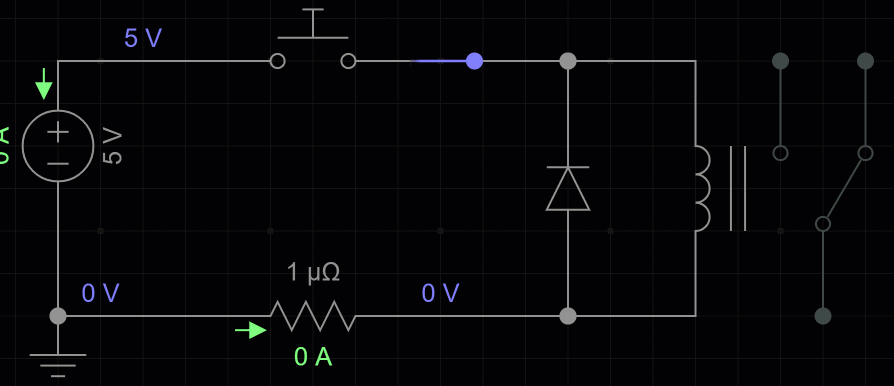Optimized at frequencies beyond traditional industry targets to support emerging applications
Safegaurding Circuits: The Essential Guide to Flyback Diodes

Flyback diodes serve as crucial components in many electronic circuits, particularly those involving inductive loads like relays, solenoids, and DC motors. The primary purpose of a flyback diode is to protect the circuit from voltage spikes generated when the inductive load is switched off. In this article, we will explore the importance and usage of flyback diodes, covering their application in relays, solenoids, and DC motors. A flyback diode is also called as freewheeling diode. It is also called by many other names like snubber diode, suppressor diode, catch diode or clamp diode, commutating diode. The flyback diode acts as a one-way valve for electrical current. When an inductive load such as a relay coil or a motor is de-energized, the collapsing magnetic field generates a voltage spike that could potentially damage the circuit components. A flyback diode provides a path for this "flyback" current, directing it back into the coil, thereby safeguarding other elements in the circuit.

Voltage spikes are short-duration electrical transients in voltage in an electrical circuit. Flyback occurs when there is sudden voltage spike across the inductive load when the supply current is abruptly reduced or interrupted. At this scenario flyback occurs due to the electromagnetic induction in the inductive load. Inductors oppose changes in the current passing through them by inducing a voltage that is proportional to the rate of the current change. When the power is distributed the magnetic field in the inductor collapses. This change in magnetic field through an inductor will induce an emf in the coil which in turn causes current to flow, even after the power is removed. To prevent large voltage spikes, the flyback diode is connected across the inductor with reverse polarity to the power supply. When the supply is connected, the diode will be reverse-biased and won’t exist in the circuit. When the supply is disconnected, the voltage polarity of the inductor is inverted, and a current loop forms between the inductor and the diode; the diode becomes forward biased. Thus, providing a low resistance path to the induced current and prevents flyback voltage from building up.
Flyback Diode for Relays

In relay circuits, the flyback effect occurs when we turn of the relays, resulting voltage spikes that can be substantial enough to damage the transistor or microcontroller driving the relay. The transient voltage spike can also result in electrical noise, affecting the performance of sensitive components. In a typical relay circuit, the flyback diode is connected in parallel to the relay coil but oriented in reverse, so it blocks current flow under normal operation. When the relay is turned off, the diode provides a path for the flyback current, thus preventing voltage spikes.
Flyback Diode for Solenoids
Similar to relays, solenoids also contain an inductive coil. When the solenoid is deactivated, the sudden change in current can induce a large voltage spike that could damage sensitive components like microcontrollers or other integrated circuits. The flyback diode is usually connected across the solenoid terminals in a reverse orientation. This ensures that the inductive kickback is absorbed, protecting the rest of the circuit.
Flyback Diode in DC Motors
DC motors create a back electromotive force (EMF) when they are turned off. This back-EMF can cause damage to the power transistors or integrated circuits controlling the motor. In DC motor circuits, the flyback diode is placed in parallel with the motor terminals. The diode absorbs the back-EMF generated when the motor is turned off, providing protection to the controlling electronics.
The importance of flyback diodes in protecting electronic circuits from damaging voltage spikes cannot be overstated. Whether you are dealing with relays, solenoids, DC motors or any other inductive loads, incorporating a flyback diode can significantly enhance the longevity and performance of your circuit. The catch diode serves a similar purpose and is equally important in specific applications like switching power supplies.








